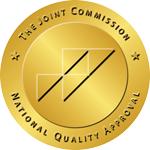Since 1975, the National Institutes of Health (NIH) and the National Institute on Drug Abuse (NIDA) have funded a comprehensive nationwide survey on drug and alcohol use among people of all ages in the U.S. This survey – called Monitoring the Future (MTF) – is designed and administrated by public health researchers at the University of Michigan. The Michigan team distributes, receives, and assesses detailed questionnaires from over fifty-thousand participants each year about their drug and alcohol use.
The MTF survey typically focuses on high school and college students – hence the name. But the study published in 2019 included detailed data sets on alcohol and drug use among adults. In this article, we’ll present this data, and discuss why it’s relevant, and how we can use this knowledge to help our friends and loved ones living with addiction create change in their lives.
The 2019 MTF Survey: Specific Data for Alcohol and Drug Use Among Adults
For the first time, the statisticians published detailed data for adults ages 19-30. They also included specific data for adults 31 and over. In previous years, data for people over age 18 appeared in age ranges, such as 18-25, 26-35, 35-54, 55-64, and 65 +. For 2019, however, the MTF team published MTF 2019 – Volume 2: College Students & Adults Ages 19-60. In this iteration of the report, the MTF team shared and analyzed the following data:
- Two-year subsets for people ages 19-30: 19-20, 21-22, 23-24, 25-26, 27-28, 29-30
- In addition, researchers sent follow-up surveys to previous respondents who are now age 35, 40, 45, 55, 60
These new reporting categories give us more precise insight, compared to previous reports, into prevalence trends in alcohol and drug use for adults. In this article, we’ll look at the key findings for people in that second group, adults between ages 35-60.
We’ll start with a general data breakdown, then move on to specific datasets we think merit attention.
Long-Term Trends Are Good – Recent Trends Are Mixed
We’ll preface this section with a caveat: all this data is pre-pandemic. The last two years have changed almost everything for most people in the U.S. We’ll publish articles on drinking and drug use in 2020 and 2021 as the data become available. This article is on the long-term trends identified before the coronavirus pandemic. Preliminary reports indicate that during 2020, alcohol and drug use increased across most age group, including adults over age thirty. We’ll address those numbers in subsequent articles.
Now, about those long-term, pre-pandemic trends.
The prevalence of illicit drug use among all age groups has decreased since 1976, with some notable exceptions. Daily and past-month marijuana use increased among several young adult categories, and past-month marijuana use increased among adults ages 35, 40, 45, and 55. In addition, the prevalence of vaping marijuana increased in every age category. While this vaping data is easily explained by two facts – vaping marijuana is a relatively new phenomenon, and recreational marijuana is now legal in several states – it’s something public health officials keep a close eye on.
The overall marijuana use data is also something we should all understand, for the same reasons. Vaping is a relatively recent phenomenon, the consequence of which no one fully understands yet because there’s no long-term data on physical health consequences. We likewise don’t have extensive data on marijuana prevalence in this new era of legalization, since the trend towards legalization of recreational marijuana use also began relatively recently, in Washington and Colorado in 2012.
However, we do have reliable data for adults in several areas: binge drinking, past-month marijuana use, and vaping marijuana. Although we offered reasons for the increases in marijuana use – vaping and otherwise – we include the data here so can see the figures for yourself.
Alcohol and Drugs: Adults 35-60
As we mentioned above, the MTF survey broke out the data for adults of specific ages: 35, 40, 45, 50, and 60. For almost all these ages, past-month marijuana use, past-month daily marijuana use, and past two-week binge drinking increased. We’ll start with the binge-drinking data.
Binge Drinking and Marijuana Use: Older Adults
Binge Drinking
Between 2015-2019, the prevalence of consuming more than five drinks in a row in the two weeks before answering the survey increased for the ages below. Data for people age 35 was not available.
The specific survey question was “Have you consumed more than five drinks in a row over the past two weeks?” The bullet points indicate the percentage of adults who answered yes in 2015 and 2019.
Here’s the data:
- 40-year-olds:
- 2015: 20.3%
- 2019: 23.1%
- 45-year-olds:
- 2015: 20.5%
- 2019: 23.5%
- 50-year-olds:
- 2015: 22.0%
- 2019: 24.6%
- 55-year-olds:
- 2015: 18.9%
- 2019: 22.2%
The overall increase in binge drinking among older adults is of significant concern. Five or more drinks in a row within two weeks of answering the survey does not prove that these older adults binge drink frequently, but it does cause professionals working in addiction and addiction recovery to think about this development. To help raise awareness, they can spread the word to their peers in other medical areas, such as general practitioners and family doctors. This appears to be a rising trend, and it’s best to arrest developments like this earlier, rather than later
Marijuana Use
Between 2015-2019, the prevalence of smoking marijuana at least once in the month before answering the survey increased for the ages listed below.
The specific survey question was “Have you consumed marijuana in the past month?” The bullet points indicate the percentage of adults who answered yes in 2015 and 2019.
- 35:
- 2015: 13.2%
- 2019: 16.0%
- 40:
- 2015: 8.8%
- 2019: 16.4%
- 45:
- 2015: 7.8%
- 2019: 10.2%
- 50:
- 2015: 8.0%
- 2019: 10.3%.
- 55:
- 2015: 8.6%
- 2019: 10.9%
The increase in rates for marijuana use is of concern also. Prevalence almost doubled for 45-year-olds and increased by 20-25% for all other ages in this group. While many people downplay marijuana use, we think that’s not a smart thing to do. When an individual regularly turns to substances to manage stress or difficult emotions, that behavior can indicate additional mental health or addiction issues in their lives, which will likely not resolve themselves without professional support and care.
Prevent Stigma Through Awareness and Early Intervention
The MTF survey serves a critical role in how we understand alcohol and substance use disorder in the U.S. Physicians, therapists, counselors, and mental health professionals use the data to get a clear, fact-based idea of exactly what’s going on in the country with regards to alcohol and drug use. When they see upward trends in adults – especially trends around daily use of substances and binge drinking – it prepares them for an expected increase in people seeking treatment for alcohol and substance use disorder.
Policymakers at all levels – federal, state, and local – use this data to allocate resources to at-risk populations or populations of increasing- or near-risk. The right resources at the right time can prevent negative consequences for everyone.
An upward trend for teens would indicate a need for increased resources in high schools and colleges. An upward trend for young adults would indicate a need for increased resources for community resources. And an upward trend for older adults places an additional responsibility on family members and family physicians.
The information above tells us that family members can keep an eye on loved ones 35 and older, and ask relevant questions related to their alcohol use. Family physicians can screen for alcohol use disorder when adults 35 and over come in for regularly scheduled wellness checks and routine lab work.
Together, families, medical professionals, and policymakers can coordinate awareness and resources in order to take proactive steps to spread the word about evidence-based detox treatment for alcohol and substance use disorder.
Treatment works – and the sooner someone in need of support gets the support they need, the better their chances of achieving sustained, lifelong recovery. The inpatient rehab facility in Ohio can help you with the treatment. Contact The Ridge today!


